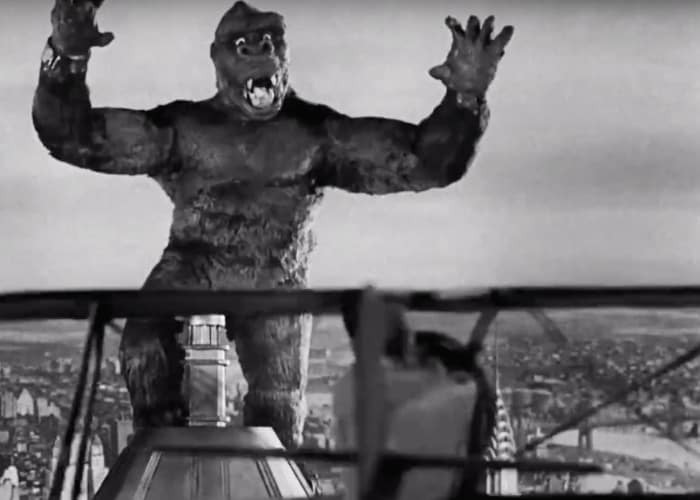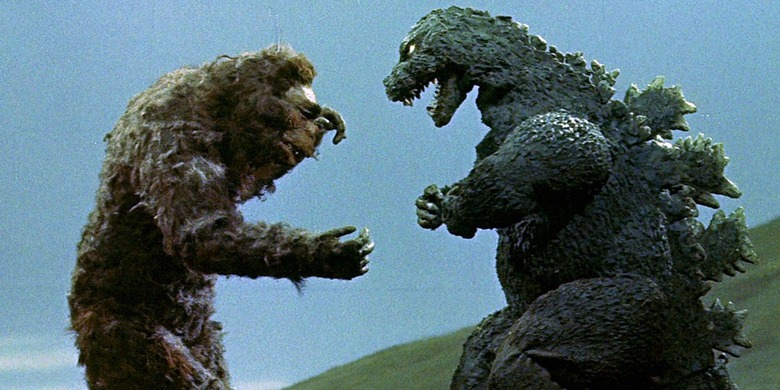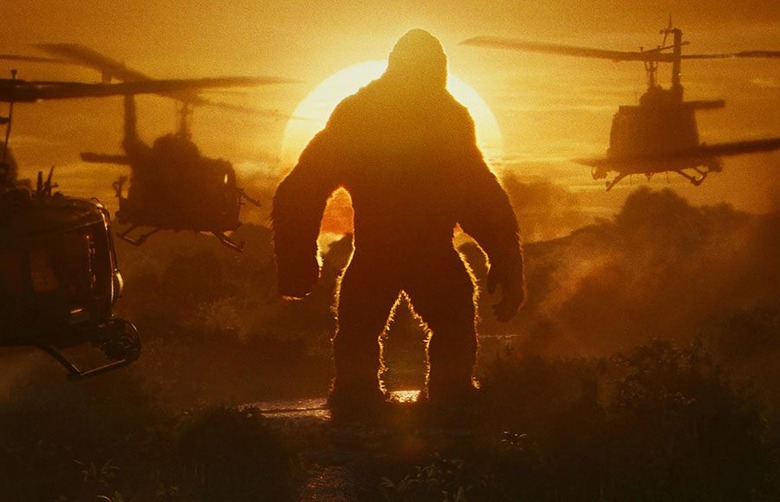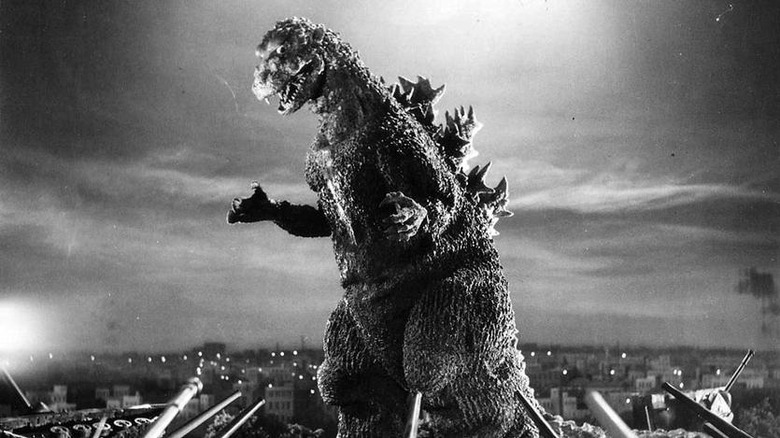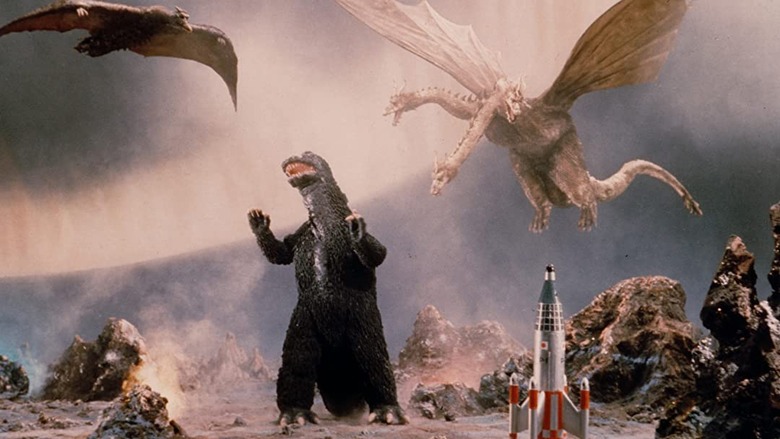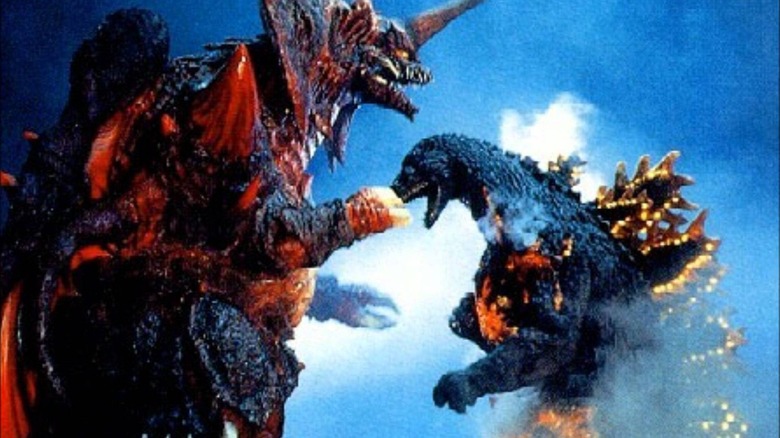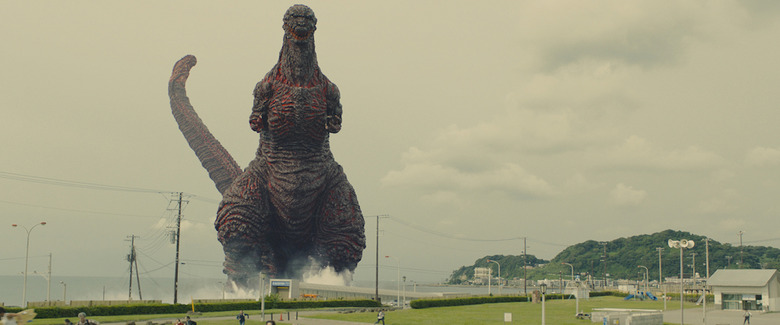Kings Of The Monsters: What To Watch To Prepare For 'Godzilla Vs Kong'
Later this month, the earth is going to quake as cinema's two biggest (and oldest) titans starting punching each other's lights out in Adam Wingard's Godzilla vs. Kong. Like other "vs" movies of this stature, this represents not one epic cinematic event but two. Though these particular versions of these characters are relatively new, both have decades (almost a century in Kong's case) of iconography behind them that can be intimidating to viewers who don't know their history, but don't want to feel lost as they pummel each other.There's good news and bad news. The good news is King Kong's story is fairly simple and won't take long to get through. The bad news is Godzilla. Not only has he appeared in dozens of films – with multiple narrative reboots – over the last half-century, but he is also the one most likely to stop your city and raise your insurance premiums. He's just bad news incarnate.But we'll get to all that. Let's start simple with Kong...
The Eighth Wonder of the World
King Kong is a giant ape who lives on a remote island shaped like a skull filled with tons of other horrific monsters. The famous story of Kong – originated in 1933's King Kong and retold several times since – involves a down on his luck filmmaker who charters a boat to a mysterious island filled with amazing undiscovered wild creatures to shoot the movie that will make his career. Under the guise of straight-up dishonesty, he cobbles together a crew and a desperate actress and gets them all to this place filled with horrors where most of them die. The island also has a native population who worship Kong and sacrifice ladies to him. They want to sacrifice the actress, but the crew is like "screw that." These folks abduct her and offer her up to Kong anyway. The mighty Kong arrives and steals the actress. The crew is like "screw that" and they go to rescue her. Despite being woefully unequipped to traverse the dangers of Skull Island, some of them manage. Then the filmmaker drugs Kong and takes him back to New York to be a sideshow. He wakes up, says "screw this," grabs the girl again, climbs atop the Empire State Building and gets shot to death. Kong is special for a lot of reasons. Even way back in 1933 (which, as you can probably already tell from this synopsis, was far from a woke era), they knew to make him a figure of pathos rather than abject terror. Kong is scary, to be sure. But he falls in love with the actress, and rather than murder her, strives to protect her from the dangers of Skull Island. Kong didn't stomp into New York City looking to make trouble. A super jerk enslaved and exploited him. Furthermore, Kong earns the title of "King" by being the most feared figure on an island teeming with monsters that would otherwise star in their own horror films. So in addition to emotional resonance, Kong wins the audience's respect for being a top-tier badass. We feel for Kong and see his eventual death as tragic.Kong's cinematic journey is short. You basically have the prime story told three times – two of which have wacky sequels – a couple Japanese swings at it from Toho, and the new Legendary film. If you're going to get primed for Godzilla vs. Kong, the essential watchlist writes itself.
King Kong (1933)
I feel like even people who profess impatience with old films will still enjoy the original King Kong, which is a straight-up masterpiece in every way...save for political correctness, which, yikes.The only modern drawback to Kong is the amount of time it takes to get the characters to Skull Island (though that's nothing compared to the Peter Jackson version). Once Kong shows up, however, this movie is a rocket that never slows down. It's a mean and violent film. Kong is not screwing around but neither are the other creatures on Skull Island. The groundbreaking stop-motion special effects are obviously from a different era, but they seem to only gain potency over time. Watching Kong move is both fascinating and hypnotizing, and something every film fan should see.
King Kong vs. Godzilla (1962)
And then there is this. Toho's version of Kong is a man in a suit, retaining none of Kong's former majesty. Instead, he is sort of a raggedy monkey person. Nevertheless, the film is a lot of cheesy fun, and if you're going to watch the new version, you might as well take a look at how far we've come. As for the fight, Godzilla clearly has the upper hand until Kong gets struck by lightning, which amazingly enough gives him more power. We get to see him swing Godzilla by his tail and shove a tree into Godzilla's mouth, so it's not like I'm saying this movie isn't good. If you like this version of Kong, you can also catch up on King Kong Escapes, which even has a Metal Kong.
Kong: Skull Island (2017)
Jordan Vogt-Roberts brings Kong into the Legendary Universe with an adventure-horror-comedy-war movie that manages to successfully pull all those strings and honoring the legendary Kong at the same time. While the film retains certain aspects of Kong's mythology (he's still a survivor in a hostile environment who has a weakness for pretty blonde ladies), Kong: Skull Island forgoes the usual Kong story beats of capture and tragedy to instead build a character with more ferocity and longevity. The soldiers up against Kong here have no chance of conquering him. They'll be lucky just to escape with their lives (most of them don't). And this is just an adolescent Kong. He still has a lot of growing to do between the Vietnam War era and now.
The King of the Monsters
We now move on to Godzilla, star of about three dozen feature films and one animated short where he stomps on Bambi.While Kong offers a story of American colonialism from the 1930s, Godzilla provides an answer to the horrific bombing of Japan at the end of World War II. His terror in the original 1954 classic isn't some campy joke. Godzilla simply destroys everything in his path, and the filmmakers make sure we remain aware of the human toll such a force would cost. Though this concept would not last, Godzilla's initial depiction is more akin to a force of nature, as dispassionate and unstoppable as a natural disaster. It's just that this one came thanks to man's tinkering with destructive science.Reckoning with the Godzilla series is no easy task. The films are broken into four distinct eras. The Showa era runs until 1975. Despite Godzilla's terrifying origins, this is where you find the silly, b-movie Godzilla films people reference most often. It doesn't take long for Godzilla to switch from a scourge upon our world to a defender of Earth. Godzilla has a kid, he dances, he even talks with other Kaiju via comic book word bubbles.Next comes the Heisei era, arriving in 1984 with The Return of Godzilla. These seven films enjoy a much tighter continuity between them, which might appeal to modern moviegoers. They are also somewhat bogged down with technobabble and '90s lunacy. The Millennium Era begins in 1999 with Godzilla 2000 and runs until 2004's Godzilla: Final Wars. These films are more stand-alone, each more or less offering its own take on a sequel to the 1954 original. As such, they come with a variety of quality levels.We are currently in the Reiwa era, which started with 2016's Shin Godzilla and also includes a trio of animated films. With only one live-action film in the era so far, it is too early to define its tropes. Still, it should be said that Shin Godzilla could represent the single best entry for a newcomer to watch. It has amazing modern effects and manages the amazing feat of making Godzilla unknowable and terrifying again. On the other hand, it's also more a satire about bureaucracy during a crisis than a typical monster movie.With this many films, not to mention this many takes on what a Godzilla movie could be, it's easy to see the difficulty in pinpointing Godzilla's story. He has the longest run of any movie character and also the least consistent. From one film to the next, he could be a hero, a villain, or something in-between. The good part of that is you don't have to worry about story much. Outside of the Heisei era, each Godzilla film functions almost like a restart, and you can jump in anywhere you want. Having said that, some films offer better starting points than others.
Godzilla (1954)
Before getting into all the goofiness the Godzilla series contains, it's best to pay some respect to the masterpiece that started it all. It is remarkable how much changes tonally between this film and its actual sequel, Godzilla Raids Again. The original Godzilla is a horror film, through and through. And no matter how many decades go by, watching Godzilla destroy Tokyo for the first time retains its power.
Invasion of Astro-Monster (1965)
On the ridiculous side of things, no Showa film offers a better representation than Invasion of Astro-Monster. The story is wild, the humans are great, and you get to see Godzilla and Rodan beat up on (and get beaten up by) King Ghidorah. A lot of people talk up Destroy All Monsters because it has so many different monsters in it, but this is the goofy Showa film to beat.
Godzilla vs. Destoroyah (1995)
Jumping ahead a whopping thirty years, this final film from the Heisei era offers a fitting conclusion to Godzilla's story. While it's true a bunch of the story rides on the films that came before, this stuff is not Shakespeare. You'll figure it out. The story focuses on a Godzilla whose heart is about to have a nuclear meltdown that threatens to blow up the planet. Meanwhile, he has to battle a demonic monster made from the same weapon that killed the 1954 Godzilla (uh, well, in most Godzilla movies, Godzilla is actually the second Godzilla). While the Showa era has the most fun films, and the Millennium era offers the best representation of scale, the Heisei era features the best-looking Godzilla films and fights. There's no better example of that than Destoroyah.
Shin Godzilla (2016)
As mentioned above, Shin Godzilla operates a bit differently than normal Godzilla sequels. There are no monster fights, Godzilla keeps changing forms, it's filled with tons and tons of talking, and Godzilla spends most of the second half in a coma. Nevertheless, this film tries to wrestle with the real-world implications of a giant monster in a way that heightens the film to a whole new level. It's the rare Godzilla film you can show to people who are not inclined to enjoy a giant monster movie. And then on top of all that, it features a Godzilla that puts all other versions of the character to shame in terms of destruction and unknowable power.

